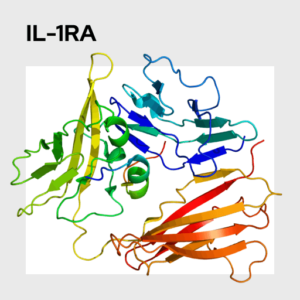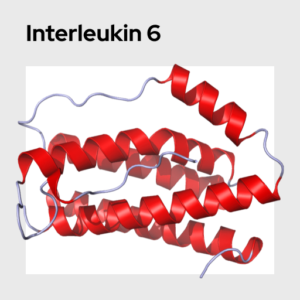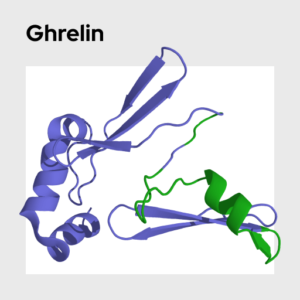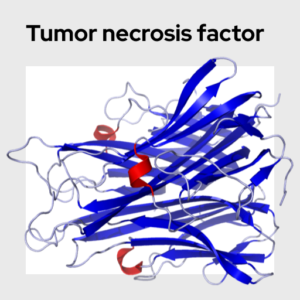Interleukin 1 beta (IL-1β)
Interleukin 1β (IL-1β) is a proinflammatory cytokine that is produced by activated macrophages in response to immunological challenge and is a key mediator of the body’s inflammatory response. Although essential for the host response to pathogens, it can also contribute to the tissue damage that occurs in the context of excessive inflammation. Because cytokines – like IL-1β – impact nervous system activity, they can potentially serve as mechanisms linking health to behavior. In addition to increasing in response to infection, levels of this cytokine also increase in response to psychosocial stress. Levels are generally low in healthy people’s blood (making them easier to capture in saliva than serum or plasma). This analyte is eligible for multiplexing.
Name: Interleukin 1β (IL-1β)
Category: Health & Inflammation
Type of test: Blood + Saliva
Interleukin 1 beta (IL-1β) is a member of the interleukin 1 family of cytokines, a group most well-known for its critical association with innate immunity and principle role in inflammatory signaling. This particular cytokine is produced as pro-IL-1β, primarily by macrophages and monocytes, and subsequently cleaved by the enzyme caspase-1 in order to become biologically active. Once in its biologically active form, IL-1β has myriad effects. Most notably, IL-1β activity plays a role in promoting immune cell proliferation and differentiation, and regulates apoptosis. IL-1β release is initiated by a wide variety of stressful stimuli including viral infection, mechanical stress, and toxins like beta-amyloid or maitotoxin, among many others. Specifically, IL-1β is released in response to detection of pathogen-associated molecular patterns (PAMPs) and damage-associated molecular patterns (DAMPs) by tissue-resident and immune pattern recognition receptors (PRRs), which results in subsequent inflammasome formation.
Once released into the extracellular environment, IL-1β enters circulation and interacts with tissues all throughout the body. As an important component of a number of biological response pathways, as both too much or little IL-1β are each linked with disease and disorder. For example, chronically elevated levels of IL-1β have been implicated in the progression of a number of inflammation-related pathologies (e.g., cardiovascular disease and autoimmune disorders). However, research also finds that IL-1β also plays a role in regulating learning and memory, such that blocking IL-1β signaling entirely compromises learning in murine models.
IL-1β also interacts with hypothalamic-pituitary-adrenal (HPA) axis, and levels of this cytokine increase in the context of psychosocial stress. IL-1β can be measured in both saliva and serum / plasma samples. However, because levels of IL-1β are typically very low in the blood of healthy individuals, it is often easier to quantify levels of this cytokine in saliva compared to serum / plasma. Correlations between salivary and serum / plasma levels of IL-1β vary based on a number of different factors, such as whether samples were collected before or after an experimental stressor (i.e., correlation coefficients are often greater after an experimental manipulation).
Huang, Z. B. & Sheng, G. Q. (2010). Interleukin-1β with learning and memory. Neuroscience Bulletin, 26, 455-468. (link)
Dinarello, C. A. (2011). A clinical perspective of IL-1β as the gatekeeper of inflammation. European Journal of Immunology, 41, 1203-1217. https://doi.org/10.1002/eji.201141550
Goshen, I., & Yirmiya, R. (2009). Interleukin-1 (IL-1): a central regulator of stress responses. Frontiers in Neuroendocrinology, 30, 30-45. https://pubmed.ncbi.nlm.nih.gov/19017533/
La Fratta, I., Tatangelo, R., Campagna, G., Rizzuto, A., Franceschelli, S., Ferrone, A., ... & Grilli, A. (2018). The plasmatic and salivary levels of IL-1β, IL-18 and IL-6 are associated to emotional difference during stress in young male. Scientific Reports, 8, 1-10. https://pubmed.ncbi.nlm.nih.gov/29445205/
Slavish, D. C., Graham-Engeland, J. E., Smyth, J. M., & Engeland, C. G. (2015). Salivary markers of inflammation in response to acute stress. Brain, Behavior, and Immunity, 44, 253-269. https://pubmed.ncbi.nlm.nih.gov/25205395/






